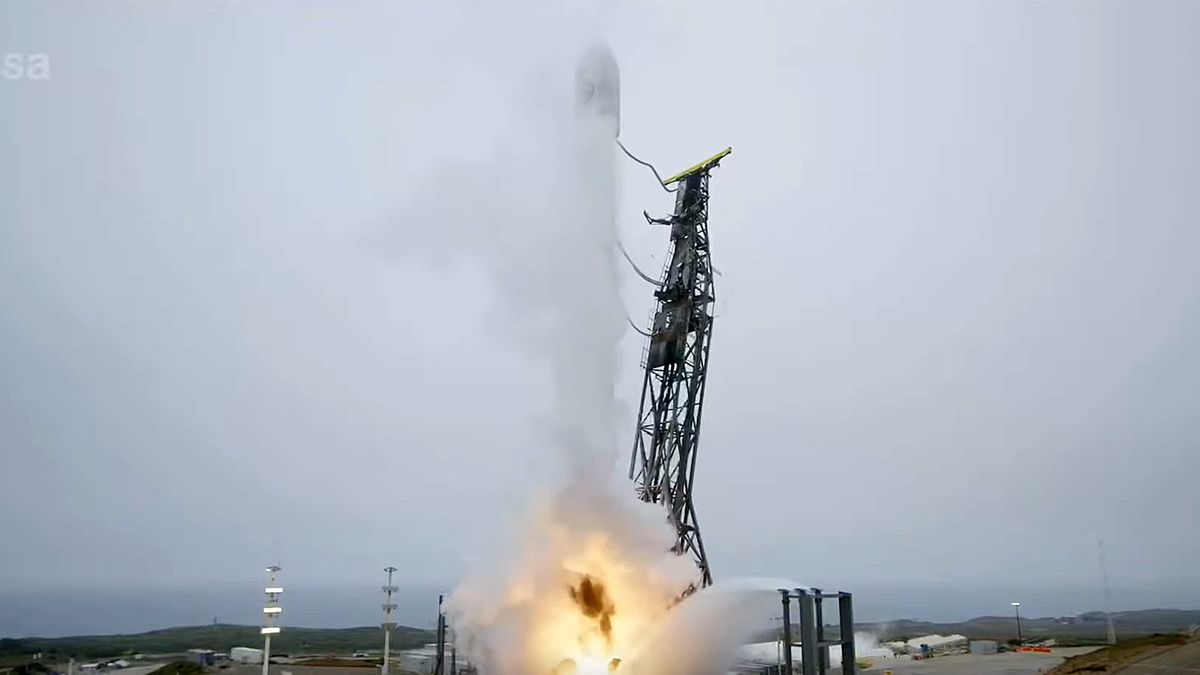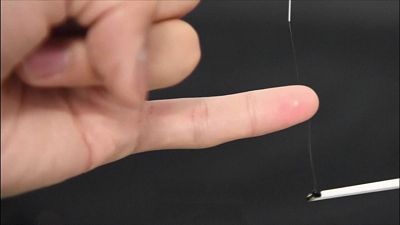The latest and largest of the space agency's Earth Explorer satellites was launched into orbit from California onboard a SpaceX Falcon 9 rocket.
The European Space Agency's latest scientific mission was successfully launched into space from the United States on Tuesday, bearing a satellite that may provide vital insight into one of the most pressing issues around climate change.
The EarthCARE satellite - a collaboration between ESA and Japanese space agency JAXA - will study how the formation of clouds and the density of aerosols in the atmosphere impact the Earth's temperature.
Obscured by low cloud cover at the Vandenburg Space Force Base in southern California, the satellite lifted off the launchpad onboard a SpaceX Falcon 9 launcher at 3.20 pm local time (12.20 am CET on Wednesday).
The satellite then separated from the rocket 10 minutes into flight and made its first contact with the Hartebeesthoek ground station in South Africa less than an hour after launch.
Understanding how clouds contribute to climate crisis
Short for Earth Cloud Aerosol and Radiation Explorer, EarthCARE was first conceived in 2004 and was designed and built by Airbus and 75 subcontracted companies.
It is expected to be in orbit for at least three years gathering data for ESA's Copernicus programme.
The latest and largest of ESA's Earth Explorer satellites, it is equipped with four state-of-the art instruments, including a Cloud Profiling Radar provided by JAXA.
For the first time, these different pieces of equipment will capture different measurements simultaneously, giving scientists a better understanding of how clouds and aerosols - small particules like dust or water droplets - disrupt the Earth's radiation balance and contribute to the climate crisis.
Speaking to Euronews Next in California, ESA's director-general Josef Aschbacher said he was "relieved" that the launch was a success.
"[I am] very happy for all the people who've worked for decades on this project; either from the science community or from the engineering side, industry, ESA, my own colleagues," he said.
"I know how much blood, sweat, and tears have been flowing into this mission to make it to where it is today".
Aschbacher worked on the EarthCARE mission as the director of ESA’s Earth Observation Programmes for five years.
"EarthCARE was one of the challenges I had on the table when I took up duty in 2016. We had to overcome technical hurdles and problems. And seeing this now all functioning is also a big satisfaction. Personally, I was touched and very emotional when I saw the launch. So, it's a big moment for me," he told Euronews Next.
'More relevant today'
Simonetta Cheli, the current head of ESA's Earth Observation Programmes, believes that while the satellite was first planned 20 years ago, it is "even more relevant today than when it was conceived".
"It [the EarthCARE mission] shows the relevance of environmental sustainability and that climate overall is something that is at the top of the agenda of our [ESA] member states, both in terms of supporting programmes, contributing to projects, and also giving continuity to the data that we have," she told Euronews Next.
"We've noticed last year was the hottest year ever recorded. It was also each month in 2024 the hottest month ever recorded.
"So the fact of having detailed information, accurate and innovative, on clouds, aerosols and precipitation becomes essential if you want to look at the radiation of the Sun towards the Earth, the effect that the clouds have in terms of cooling effect, the effect of the returning radiation from the Earth and the cooling of the Earth," she added.
"All of that today will be able to be monitored even more in-depth with synergetic measurements from the four instruments on board EarthCARE".
Following its successful deployment on Tuesday, EarthCARE will be controlled from ESA's European Space Operations Centre in Darmstadt, Germany, where it will continue to be monitored and its instruments calibrated.
The first data from the mission is set to be available in six months' time when the satellite is fully commissioned.















